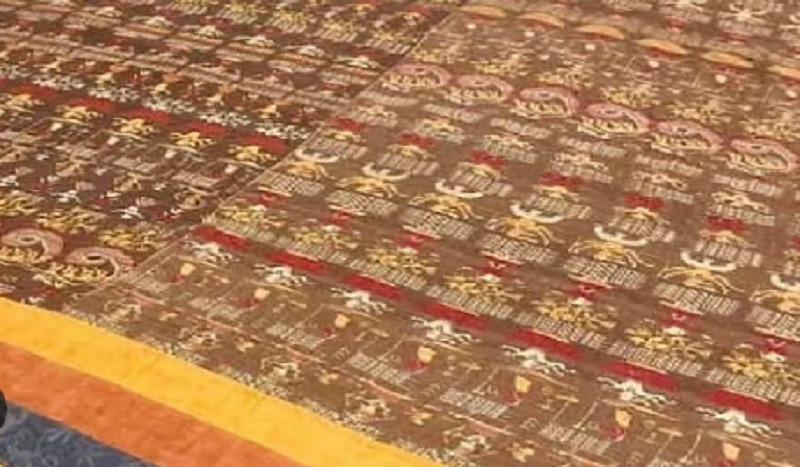Guwahati: The British Museum in London has agreed to loan the silk textile ‘Vrindavani Vastra’, created by Vaishnav saint Srimanta Sankardeva in the 16th century, to Assam for display in 2027.
The British Museum has outlined specific conditions for displaying the ‘Vrindavani Vastra’ in Assam for 18 months in 2027, including the requirement of a state-of-the-art museum.
‘We have been trying to bring the textile for a long time so that people can see it, and now the British Museum has agreed to loan it for display, provided a museum, meeting environmental and security standards, is set up in the state,” Assam Chief Minister Himanta Biswa Sarma said on Saturday.
As part of its corporate social responsibility initiative, the JSW Group has volunteered to establish the museum, which will be gifted to Assam.
“We have already allotted land to them for the purpose. After a long time, we are moving towards our cherished dream of bringing the textile to the state,” the CM said.
After a visit to the state, officials from the British Museum evaluated the existing museums and found them unsuitable for the display. “We therefore decided to construct a new one,” Sarma stated.
”I have already written to the Centre seeking ‘Sovereign Guarantee’, an undertaking to be given to the British Museum that it will be returned after 18 months without any damage”, he said.
The Vrindavani Vastra, measuring over nine metres and composed of several silk panels originally numbering fifteen, was created under Sankardeva’s guidance at the request of Koch king Nara Narayan. It depicts scenes from the life of Lord Krishna and includes portions of a poem authored by Sankardeva.
ALSO READ: From classrooms to cosmos: Space education reaches 15 Bodoland schools
The textile serves as a testament to Assamese weaving, incorporating elements from various artistic traditions, and travelled from Assam to Tibet before being acquired by the British Museum in 1904.
Its return to Assam will offer locals and visitors a rare opportunity to witness a priceless piece of cultural heritage in its place of origin.















